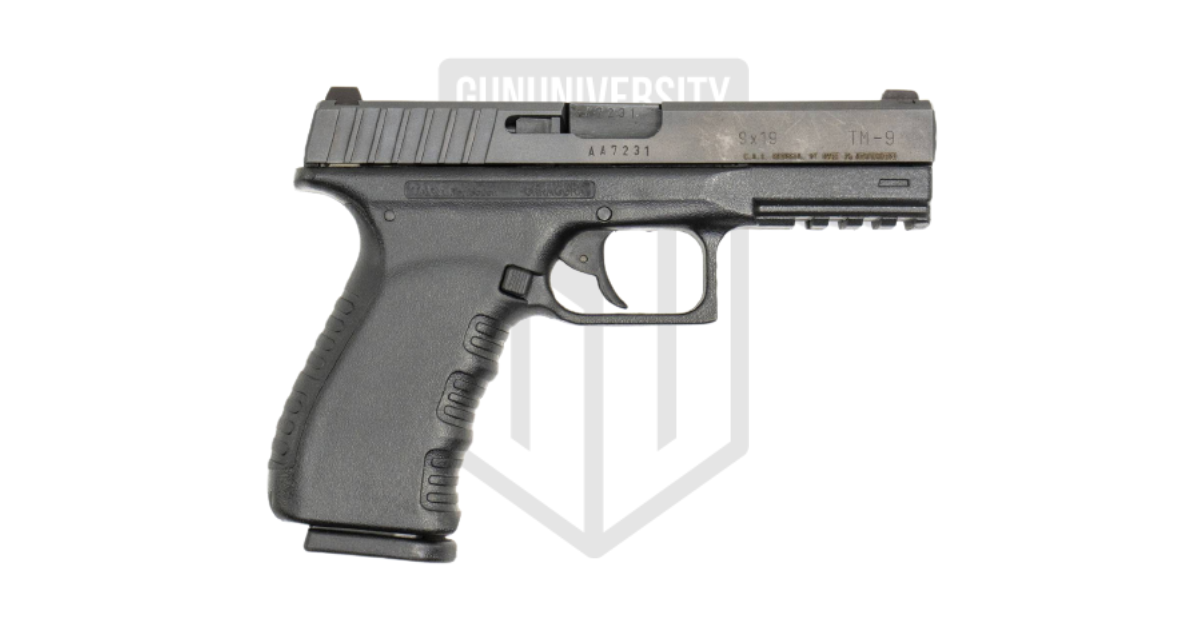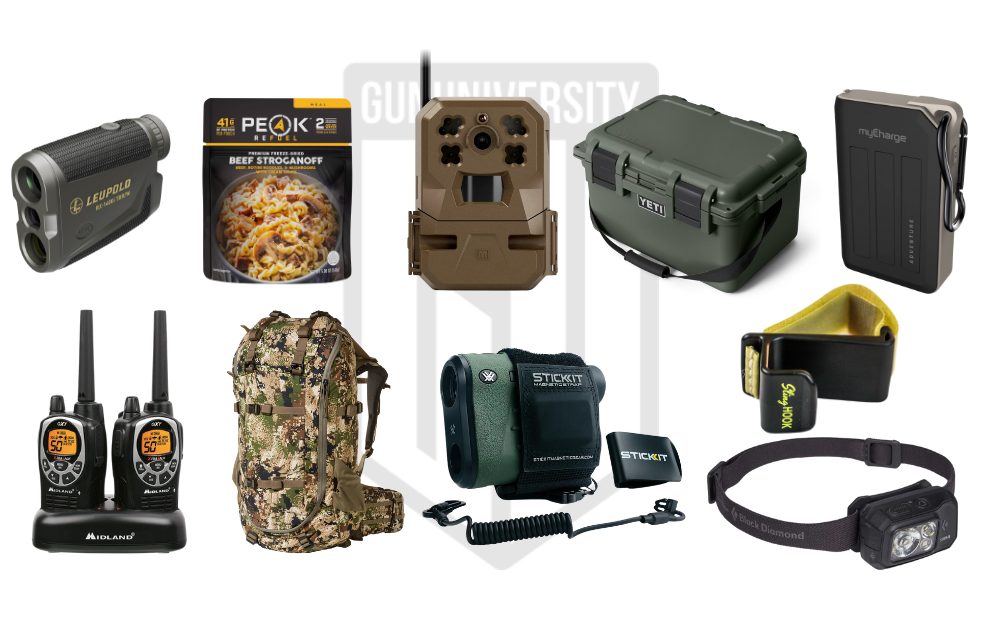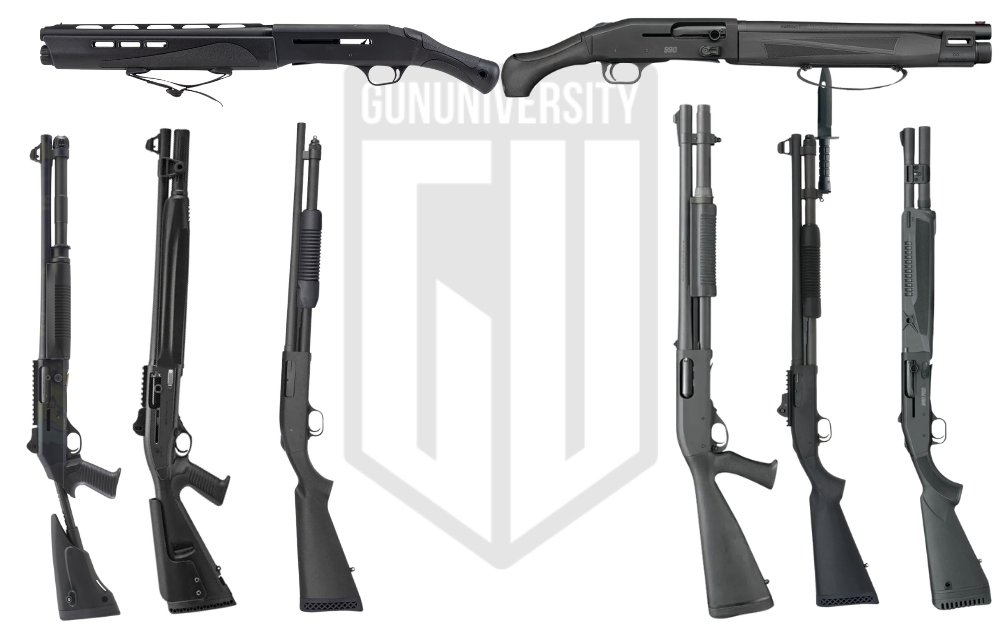5 Best Choke for Buckshot 2025: Which is Right For You?
Choosing the right choke for your buckshot is key to shooting efficiently, whether you’re a newbie or a seasoned shooter. I can’t count how many times I mixed things up when I first started with buckshot—trust me, I’ve been left in a cloud of feathers more than once while trying to hunt small game.
Buckshot is versatile and shines in close-to-mid-range situations, like hunting medium-to-large game or self-defense, where its spread beats out birdshot. If you’re into duck hunting, check out our best chokes for waterfowl hunting.
From my experience, a narrower choke generally gives you the best, most precise patterns with buckshot. Of course, no single choke works perfectly for every scenario, so I’ve put together a list of top-performing chokes for various needs. Let’s dive into what buckshot is, how it differs from other ammo, and how I selected the best options for you.
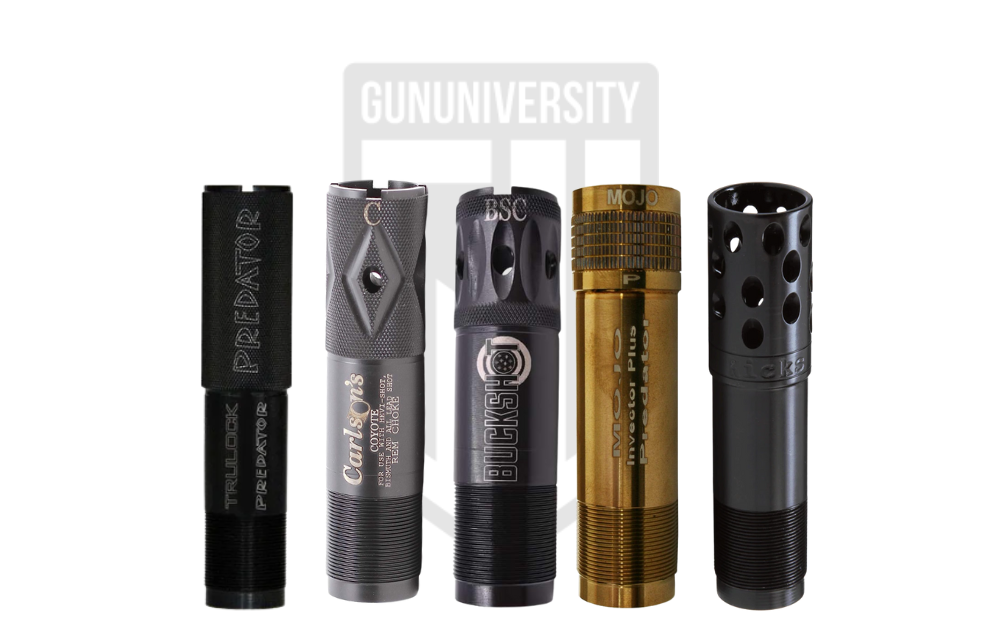
What is buckshot?
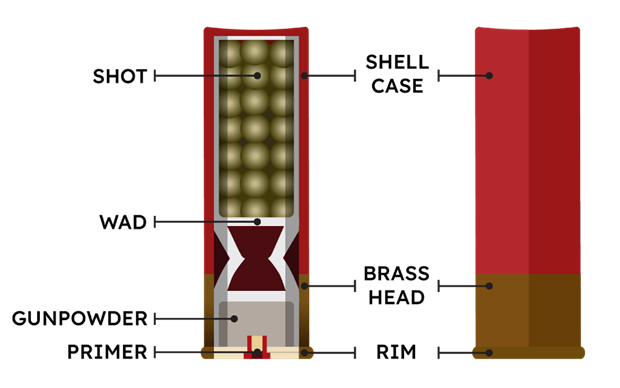
Buckshot is one of the many types of ammo, or “shells,” you would use with a shotgun, and it gets its name from being frequently used to hunt “buck,” also known as large male deer. The pellets, or “shots,” in a buckshot shell are notably large, which allows them to deliver a serious amount of damage, making them excellent for taking down large prey.
Buckshot and other shot types are categorized by number, ranging from #00 to #4, with #00 being the most popular for hunters targeting large game. For example, #0000 and #000 pellets, weighing about 85 grains and 70 grains respectively, are the largest and are generally considered too powerful for most hunts. Personally, I stick with #00, or “double aught,” as it strikes the right balance between power and safety.
| Buckshot Size | Approximate Weight of Single Pellet | Approximate Number of Pellets in a Shell | Approximate Weight of Load (oz) |
|---|---|---|---|
| #0000 | 5.1g (85 gr.) | 5 | .910oz |
| #000 | 4.54 g (70 gr.) | 6 | .972oz |
| #00 | 3.49 g (53.8 gr.) | 8 | .997oz |
| #0 | 3.18 g (49 gr.) | 9 | 1.022oz |
| #1 | 2.62 g (40.5 gr.) | 11 | 1.029oz |
| #2 | 1.91 g (29.4 gr.) | 15 | 1.023oz |
| #3 | 1.52 g (23.4 gr.) | 20 | 1.085oz |
| #4 | 1.34 g (20.7 gr.) | 24 | 1.148oz |
Handling buckshot requires special attention due to its significant stopping power. Misfires can be extremely dangerous, which is why hunters often wear bright clothing to stay visible and avoid accidents. By using #00 pellets, I ensure I have the power needed without pushing safety limits too far.
Finally, not all buckshot pellets are created equal. They come in materials like lead, copper, tungsten, and copper-plated steel, each affecting shot patterns differently. Understanding these variations can help you choose the best buckshot for your hunting needs.
Now that you know what buckshot is, let’s take a look at the different types of chokes you can use to get the most out of it.
What type of choke is best for buckshot?
Depending on the hunting scenario, you might want a tighter or looser choke to control the spread and pattern of your shots. Based on my experience, I’d recommend two choke types for buckshot; full chokes and modified chokes.
Now, full chokes have the tightest constriction and narrow down the pellets the most, creating the tightest patterns that hold together longer for a dense impact. Modified chokes, being slightly less constricted, produce a more open pattern but still maintain effectiveness within the “kill zone.”
Typically, your kill zone is about 30 inches in diameter, and full chokes can land about 70% of your shot’s pellets within this zone. A modified choke for buckshot isn’t that far off and can result in a 60% distribution.
How I Chose the Best Choke for Buckshot
As a former Navy officer, I’ve had the opportunity to test countless chokes for buckshot over the years. While I trust my own judgment, I didn’t want to rely solely on my experiences when compiling this list of the best buckshot chokes. Therefore, I reached out to some of my professional shooter friends who know the ins and outs of buckshot. Combining my knowledge with their insights, I’ve created a comprehensive list of the best buckshot chokes available today.
I understand that choosing a buckshot choke is a personal decision, so I’ve categorized these chokes based on their strengths to suit different preferences. Additionally, I’ve included a buyer’s guide to help you determine which buckshot choke is right for you. Keep reading to find the best buckshot choke for your needs.
Gun University’s Choices of the Best Chokes for Buckshot
Best Chokes for Buckshot
Best overall Carlson’s Buckshot Choke Tube |  |
| Buy on Amazon |
Best for predators and large game Mojo Outdoors Predator Fatal Shot Choke Tube | 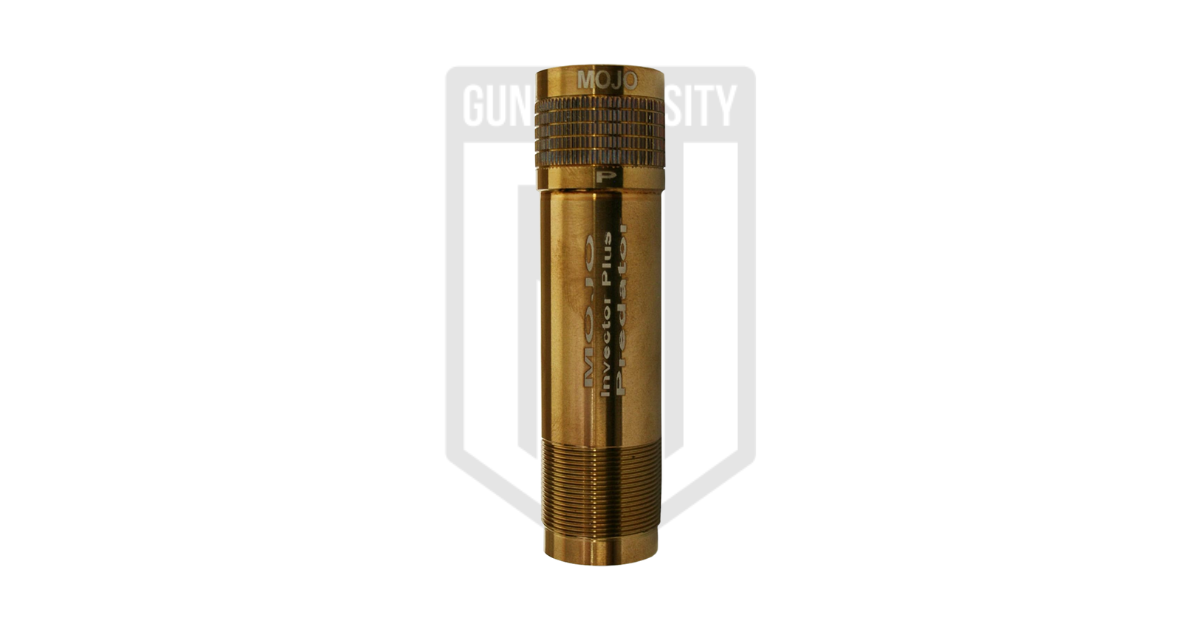 |
| Buy on Amazon |
Best long range buckshot Carlson’s Coyote Choke Tube | 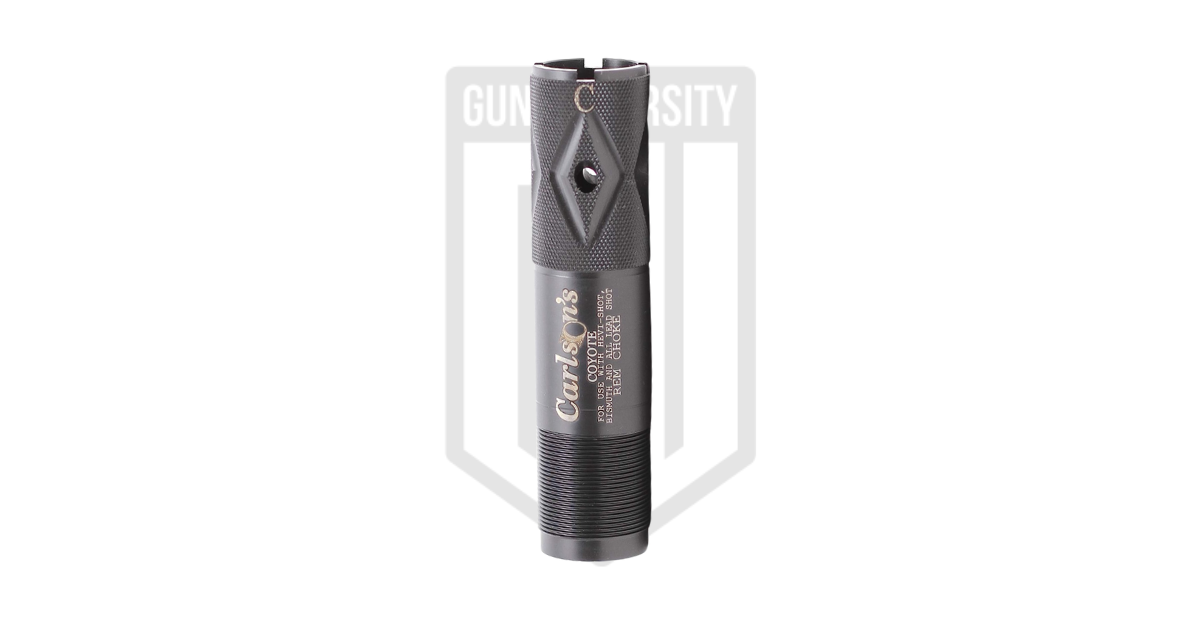 |
| Buy on Amazon |
Best budget Trulock Predator Choke Tube | 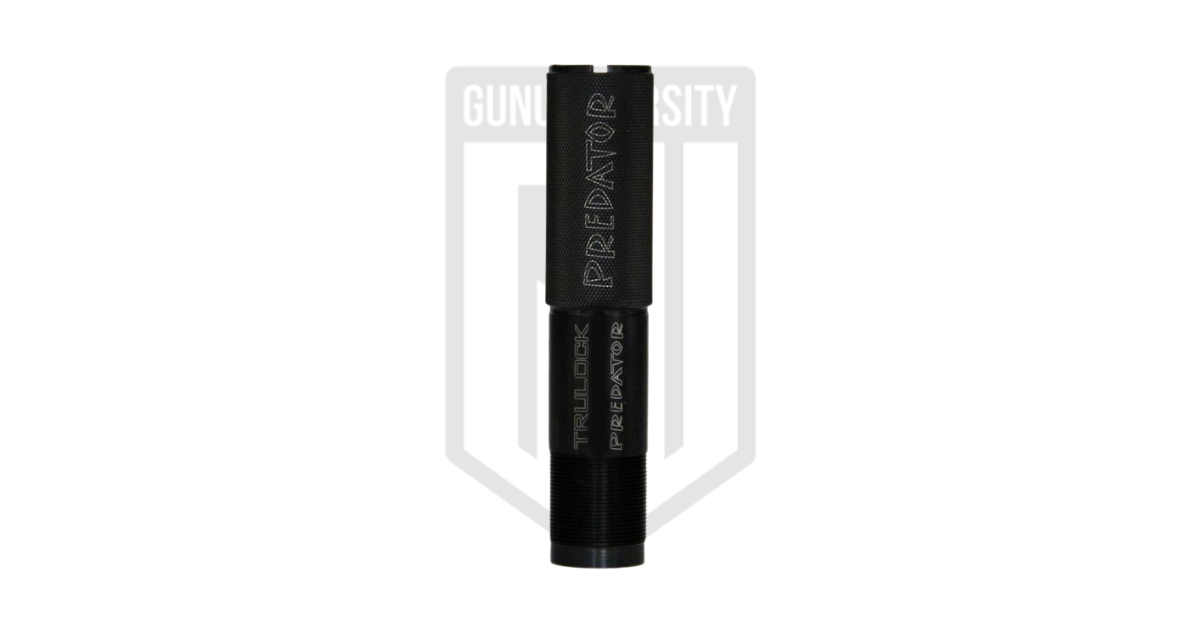 |
| See Price |
Best for dense patterns Kick’s Buck Kicker Choke Tube | 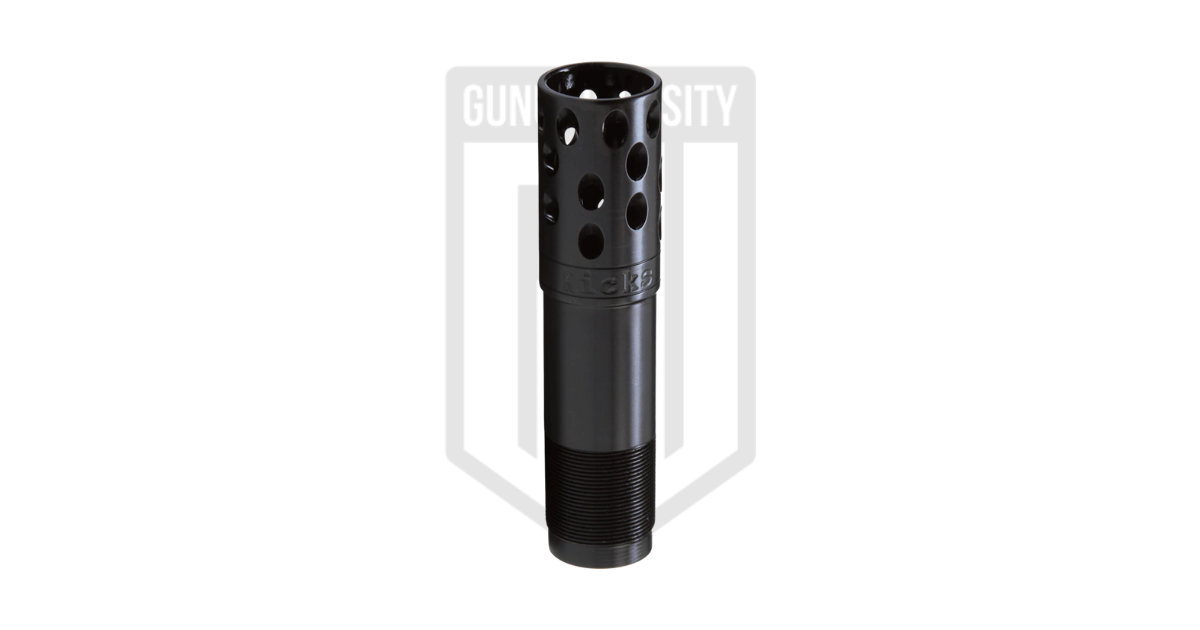 |
| See Price |
Best Buckshot Choke Spec Comparison
Below is a table of the specifications for each choke. Click the name of the item to jump to that review.
| Choke | Gauge | Material | Length (in) | Extended/Flush |
|---|---|---|---|---|
| Carlson’s Buckshot Choke Tube | 12 | Heat treated 17-4 stainless steel Black finish | 8 | Extended |
| Mojo Outdoors Fatal Shot Choke Tube | 12 | 17-4 Ph stainless steel Gold finish | 9 | Extended |
| Carlson’s Dead Coyote Choke Tube | 12 | Stainless steel Black finish | 8 | Extended |
| Trulock Predator Choke Tube | 12 | Stainless steel Black oxide finish | 4 | Extended |
| Kick's Buck Kicker Choke Tube | 12 | 17-4 stainless steel Black finish | 8 | Extended |
Best Chokes for Buckshot
Here is our list for the best chokes for shooting buckshot
- Carlson’s Buckshot Choke Tube
- Mojo Outdoors Fatal Shot Choke Tube
- Carlson’s Dead Coyote Choke Tube
- Trulock Predator Choke Tube
- Kick’s Buck Kicker Choke Tube
Best Choke for Buckshot – Reviews
Since the right choke for one person may not work for everyone, I’ve ranked the best ones I’ve used in several categories, instead of ranking them in order.
Best overall Carlson’s Buckshot Choke Tube
- Effectiveness A
- Durability A
- Ease of Use A
- Value A
Our Grade
A
Reader’s Grade
TBD
Based on 0 Reviews
Your Grade
Do You Own This Accessory? Leave A Review
Success Your Grade Has Been
Added To Our Reader’s Score
We use email to verify the accuracy of our reviews. We promise to never spam you.
Carlson’s Buckshot Choke Tube Specs
- Gauge 12
- Material Heat treated stainless steel finished with a non-reflective matte black coating
- Recommended Shells Lead, steel, and HEVI-Shot loads (cannot be used with any steel shot larger than BB)
- Extended/Flush Extended
- Length (in) 8
Carlson’s Buckshot Choke Tube Review
If you’re looking for a jack-of-all-trades buckshot choke tube, I recommend going with Carlson’s Buckshot Choke Tube. It is a versatile choke that can be used in most situations.
The Carlson Buckshot Tube gives you tidy patterns with #00 and #000 buckshot, and this holds true on the field as well. When you pair it with the recommended buckshot, it has enough power for everything from hunting to home defense.
This choke has been extended from the barrel and has been ported to reduce recoil and muzzle jump. I also like its matte black finish since it makes the choke ideal for low light hunting to make sure that you don’t scare off your prey before you take the shot.
Now, one problem I have with it is that while it works well for all sizes of buckshot (from #000 buckshot all the way to #4 buckshot), you cannot use steel shot larger than BB size (.18”) or steel shot at velocities of 1,550 feet per second. So, if you are someone who typically hunts predators or other large game, this may not be the best choice for that type of quarry.
Overall, I would recommend this choke to almost anyone because it can be a good fit for almost any situation and handle most ammunition. It is also durable, hassle-free, and doesn’t cost a fortune. I’d say that’s a pretty sweet deal.
Carlson’s Buckshot Choke Tube Pros and Cons
- Flexibility – Can be used in a variety of situations
- Recoil – Reduced recoil due to the porting
- Pattern – Consistent patterns
- Installation – Easy installation and removal
- Velocity Rating – Doesn’t work well with steel shot above 1550 feet per second
Best for predators and large game Mojo Outdoors Predator Fatal Shot Choke
- Effectiveness A
- Durability A
- Ease of Use A-
- Value A
Our Grade
A
Reader’s Grade
TBD
Based on 0 Reviews
Your Grade
Do You Own This Accessory? Leave A Review
Success Your Grade Has Been
Added To Our Reader’s Score
We use email to verify the accuracy of our reviews. We promise to never spam you.
Mojo Outdoors Predator Fatal Shot Choke Specs
- Gauge 12
- Material 17-4 Ph stainless steel
- Recommended Shells Any
- Extended/Flush Extended
- Length (in) 9
Mojo Outdoors Predator Fatal Shot Choke Review
Mojo is one of my favorite choke brands out there because of one thing: they always keep the hunter’s needs in mind. So, when I picked up the Mojo Outdoors Predator Fatal Shot Choke, I had very high expectations, and I’m pleased to say they’ve managed to exceed it.
What really impressed me was how this choke was designed with predator hunting in mind, specifically in collaboration with the experts at Rob Robert Gunworks. The 17-4 Ph stainless steel construction and gold finish make it solid and durable, but what stands out to me is its versatility. Being able to handle everything from lead to steel shots is a game-changer, especially since many chokes don’t handle steel well.
One of my favorite features is that you don’t have to constantly switch out tubes when you’re hunting predators and large game. It takes on almost any ammo I use, and the knurled grip makes it easy to change when needed. However, the unported design does increase recoil, which can make follow-up shots a bit tricky.
Overall, when I’m out hunting coyotes or larger predators, the Mojo Outdoors Predator Fatal Shot is my go-to. It’s not great for smaller game, but for large predators, it’s hard to beat.
Mojo Outdoors Predator Fatal Shot Choke Pros and Cons
- Textured – Convenient grip for changing chokes without tools
- Pattern – Dense and uniform shot patterns
- Efficacy – Quicker and cleaner shots
- Ammo Flexibility – Usable with all types of ammo
- No Ports – Increased recoil and muzzle jump
Best long range buckshot Carlson’s Coyote Choke Tube
- Effectiveness A-
- Durability A
- Ease of Use A
- Value A-
Our Grade
A
Reader’s Grade
TBD
Based on 0 Reviews
Your Grade
Do You Own This Accessory? Leave A Review
Success Your Grade Has Been
Added To Our Reader’s Score
We use email to verify the accuracy of our reviews. We promise to never spam you.
Carlson’s Coyote Choke Tube Specs
- Gauge 12
- Material Stainless steel with a matte black finish
- Recommended Shells HEVI-Shot, lead, nickel, or copper plated loads (not approved for steel shot larger than #4)
- Extended/Flush Extended
- Length (in) 8
Carlson’s Coyote Choke Tube Review
There’s another Carlson on the list, and as the name suggests, the Carlson’s Coyote Choke Tube is designed specifically for hunting coyotes. I’ve also used it to hunt medium to large game since it has a tighter constriction compared to Carlson’s Buckshot Choke Tube, allowing for tighter spreads at longer ranges.
In my experience, this choke really shines when you’re looking to extend your reach. While some hunters say it struggles at shorter distances, I wouldn’t recommend using it for anything close-range. Where this choke truly excels is with #4 buckshot at longer ranges. I’ve confidently taken shots at predators from up to 70 yards with solid patterns, which is why I’ve ranked it as the best long-range buckshot choke.
I’ve even used it for ducks on a medium-range hunt, and its tight pattern gave me a clean kill without ruining the bird. I also like how easy it is to install and remove thanks to the extended design with grooves.
The downside? It kicks harder and has a noticeable muzzle jump, even with the porting, making quick follow-up shots difficult. You also can’t use larger steel shot, which matters for waterfowl hunting in states requiring non-lead ammo. It’s not a deal-breaker for me, but if you’re in a lead-free zone, check your local laws before buying.
Carlson’s Coyote Choke Tube Pros and Cons
- Range – Works well for targeting predators from long distances
- Pattern – Dense patterns at extended ranges
- Recoil – More recoil and muzzle jump
- Ammo Restrictions – Designed specifically for smaller loads, using larger loads may cause damage
Best Budget Trulock Predator Choke Tube
- Effectiveness A-
- Durability A
- Ease of Use A-
- Value A+
Our Grade
A
Reader’s Grade
TBD
Based on 0 Reviews
Your Grade
Do You Own This Accessory? Leave A Review
Success Your Grade Has Been
Added To Our Reader’s Score
We use email to verify the accuracy of our reviews. We promise to never spam you.
Trulock Predator Choke Tube Specs
- Gauge 12
- Material Stainless steel with black oxide coating
- Recommended Shells #2, #4 buckshot
- Extended/Flush Extended
- Length (in) 8
Trulock Predator Choke Tube Review
If you are on a budget and looking for a value priced choke, then I’ve got you covered. The Trulock Predator Choke line is very affordable and will help shoot consistent #00 or #000 buckshot at a short range; however, this choke truly shines at predator hunting, so I recommend pairing it with either a #4 buck or a #2 buck when hunting.
What I like about Trulock is that they don’t cut costs on construction; made of high strength stainless steel, the Predator will last you a long time. It also has a black oxide finish, and a knurled head for easy installation and removal.
Like Trulock’s waterfowl choke line, the predator also gives you some tight pattern which is perfect for hunting varmints. I recommend you take some time patterning your shotgun when you use it though; it not only helps you get familiar with your choke but also helps to find the right load for you. Trulock is so confident in their product that they also have a 60-day refund or exchange policy; so if you don’t like your purchase, you can always get your money back. But after using it, I don’t think you will. It’s a very solid all rounder choke for any hunter on a budget.
The only problem is that the Predator is non-ported right out of the box, meaning you could experience a bit of recoil and muzzle jump. This is hardly a deal breaker though, and I would still say it’s a great value priced choke.
Trulock Predator Choke Tube Pros and Cons
- Pattern – Balanced pattern density and spread
- Range – Great for long-range shooting
- Grippy – Textured grip for easy removal and installation
- Recoil – Increased recoil and muzzle jump
Best for dense patterns Kick’s Buck Kicker Choke Tube
- Effectiveness A
- Durability A-
- Ease of Use A
- Value B+
Our Grade
A-
Reader’s Grade
A+
Based on 1 Reviews
Your Grade
Do You Own This Accessory? Leave A Review
Success Your Grade Has Been
Added To Our Reader’s Score
We use email to verify the accuracy of our reviews. We promise to never spam you.
Kick’s Buck Kicker Choke Tubes Specs
- Gauge 12
- Material Stainless steel
- Recommended Shells Lead loads
- Extended/Flush Extended
- Length (in) 8
Kick’s Buck Kicker Choke Tubes Review
Coming in as my pick for the best dense patterns (and, honestly, the best name) is Kick’s Buck Kicker. The Buck Kicker comes in different constrictions for different shot sizes, but I am personally a huge fan of their full choke, which is perfect for #00 buck. I’ve always gotten dense patterns with this choke. You can get effective patterns between 40 and 60 yards if you find the right combination of choke and shot size.
What I really appreciate about the Buck Kicker is the build quality. It’s made from 17-4 PH grade stainless steel, which sets it apart from lower-quality factory chokes. I’ve found it to be incredibly durable and corrosion-resistant, and it’s held its precision since day one. The extended design, diagonal ports, and conical internal shape all work together to tighten up those patterns to around 20-22 inches, which is ideal for buckshot.
Now, the one downside for me is that it’s only recommended for lead shot, and with the restrictions on lead in certain states, that’s a bit of a limitation. Copper-plated pellets work great, but I’m always cautious about wear. Still, if dense patterns are your top priority, this choke is hard to beat.
Kick’s Buck Kicker Choke Tubes Pros and Cons
- Porting – Extra ports designed for reduced recoil
- Patterns – Consistent, dense patterns up to 40 yards
- Shot Type – Not ideal for steel shot
Best Choke for Buckshot – Buyers guide
If you are new to buckshot chokes, it can be tricky to know what to look for when buying them and what differentiates them from other types of chokes. So I’ve put together a buyer’s guide to help you understand the differences between the different types of ammo and what you should be looking at when buying buckshot chokes. Let’s get right into it.
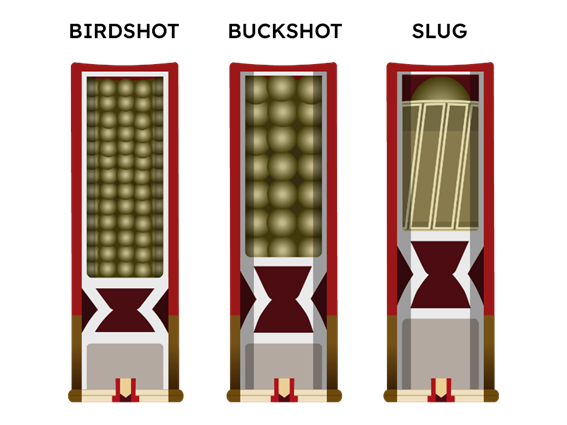
The biggest difference between buckshot and birdshot is the size of the pellets that are loaded in the shell.
Birdshot shells are mostly used to hunt—you guessed it—birds and other small game, and they contain tiny pellets in large numbers, while buckshot shells have a smaller amount of larger pellets.
You wouldn’t stand a chance against buck or elk with birdshot, and you’d probably vaporize a duck if you went at it with buckshot—a mistake I have unfortunately made in my early days of hunting.
Slugs, on the other hand, do the job of multiple buckshot shells—they can take down large prey in one shot, but it would be a waste of power to use them on quail or other smaller game. Here’s a bite-sized overview of the most important differences you should be aware of:
| Birdshot | Buckshot | Slug |
|---|---|---|
| Shots range from #4 to #9 (.13” to .08”) | Shots range from #000 to #4 (.36” to .24”) | Shots range from 7⁄8 oz, 1 oz, and 1 1⁄8 oz |
| Used for hunting small game, vermin, birds, shooting sports, and target practice | Used for hunting medium to large game, self-defense, and law enforcement scenarios | Used for hunting medium to larger game |
| Broader spread to hit fast-moving targets | Tighter spread for ethically harvesting mid-large game | No spread |
Now that we’ve covered the basics of what buckshot is and what sets it apart from other shotgun ammo, here are some questions you should be asking when you buy your buckshot choke.
What to consider when purchasing a buckshot choke?
With chokes, it’s worth remembering that certain specs are more important than others, depending on your priorities and your quarry. Asking yourself these questions while browsing through your options can help narrow down your best choices:
Purpose – What do you intend to use the choke for?
Do you want a choke you can use for a variety of purposes or a choke specifically for hunting? Maybe you don’t hunt and want a choke to defend yourself. Depending on what you have in mind, you may want to pick a certain choke over another.
Range – What do you hunt and what’s the range you need?
Depending on what you hunt, the range you’ll need from your choke will differ. If you are deer hunting, you are going to need something with long ranges and tight patterns, but you may not need the same range for small game. Consider your hunting habits and optimal ranges when choosing a choke.
Ease of use – Is your choke easy to use right out of the box?
While patterning is a general practice when it comes to using chokes with different types of ammunition, chokes that work well with the recommended ammo right out of the box are so much easier to use. They eliminate the need for guesswork, allowing you to get straight to hunting.
Manufacturer recommendations – Does the choke have limitations?
They may design certain chokes for specific ammo; therefore, it is important to identify any special restrictions for the choke. If the choke cannot handle a specific ammo type or ammo velocity, it could damage the choke over time. I know a friend in California who ordered a buckshot choke in a hurry and found out on the packaging that it couldn’t handle steel shot. As we all know, certain states have laws preventing lead ammunition. Save yourself some time by taking a look at the manufacturer’s recommendation for the choke.
Finding the right choke at the end of the day depends on you; what you want out of your shotgun, your personal situation, and your ammo preferences, so use your judgment to choose the one that fits you the best.
Conclusion
You have a lot to consider when you purchase a choke, but taking that time to experiment and figure out what really works for you can make a big difference in your hunts. There’s nothing wrong with choosing a highly rated choke, but you’re always going to perform best with a choke that feels comfortable for you to use with your shotgun. Don’t be afraid to take a chance on a choke you like, you never know–it just might be the right one for you. Happy hunting.
Best Chokes for Buckshot FAQs
Yes, you can shoot #00 buckshot with a full choke. In fact, shooting buckshot with a full, modified, improved or cylinder choke is perfectly safe, but I recommend sticking to full or modified chokes. They give you a better range and denser patterns.
The best overall choke to use with the buckshot is the Carlson’s Buckshot Choke Tube. It’s versatile, durable, and perfect for hunting.
Yes, as long as your shotgun is designed for interchangeable choke tubes, you can easily switch between different chokes, including cylinder bore and improved cylinder. Many modern shotguns come with screw-in choke tubes that make changing them a quick task depending on your shooting scenario.
Generally, yes. A tighter choke, like a full choke, will produce a denser buckshot pattern, keeping more pellets on target at longer distances. However, if the choke is too tight, it can distort the shot pattern or increase recoil.
A turkey choke is designed to deliver the tightest pattern possible, typically at longer ranges. For turkey hunting, a full or extra-full choke is most effective because it constricts the shot tightly, increasing the chance of hitting the target with more pellets at greater distances.
Recent Posts
December 8, 2025
November 29, 2025
November 25, 2025
November 22, 2025


